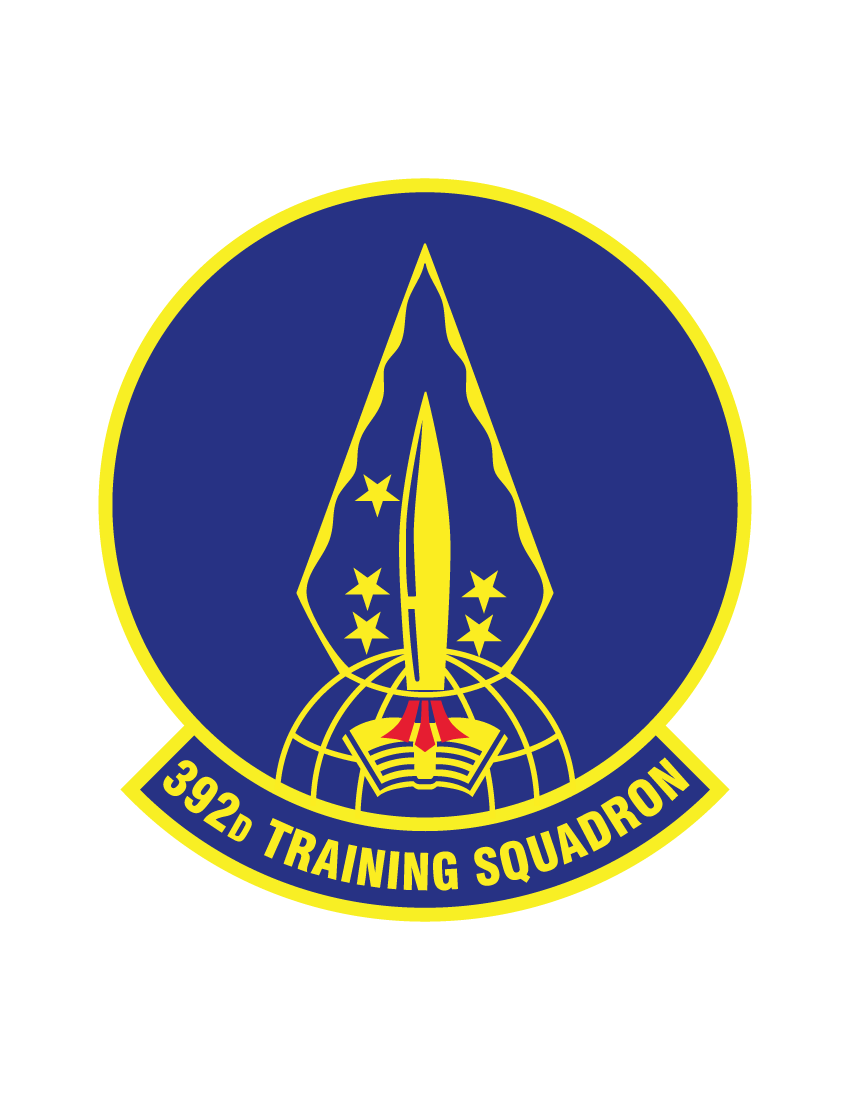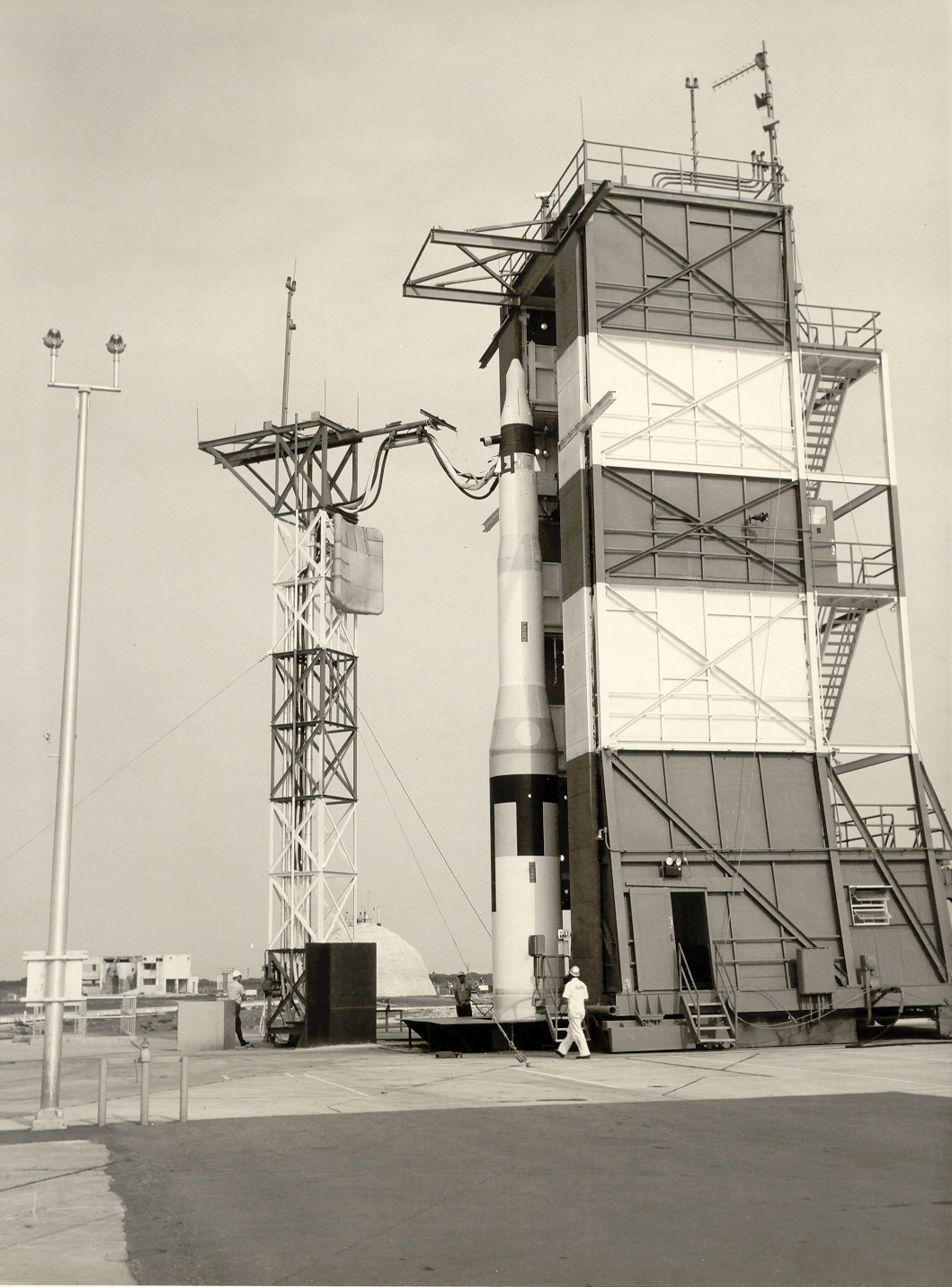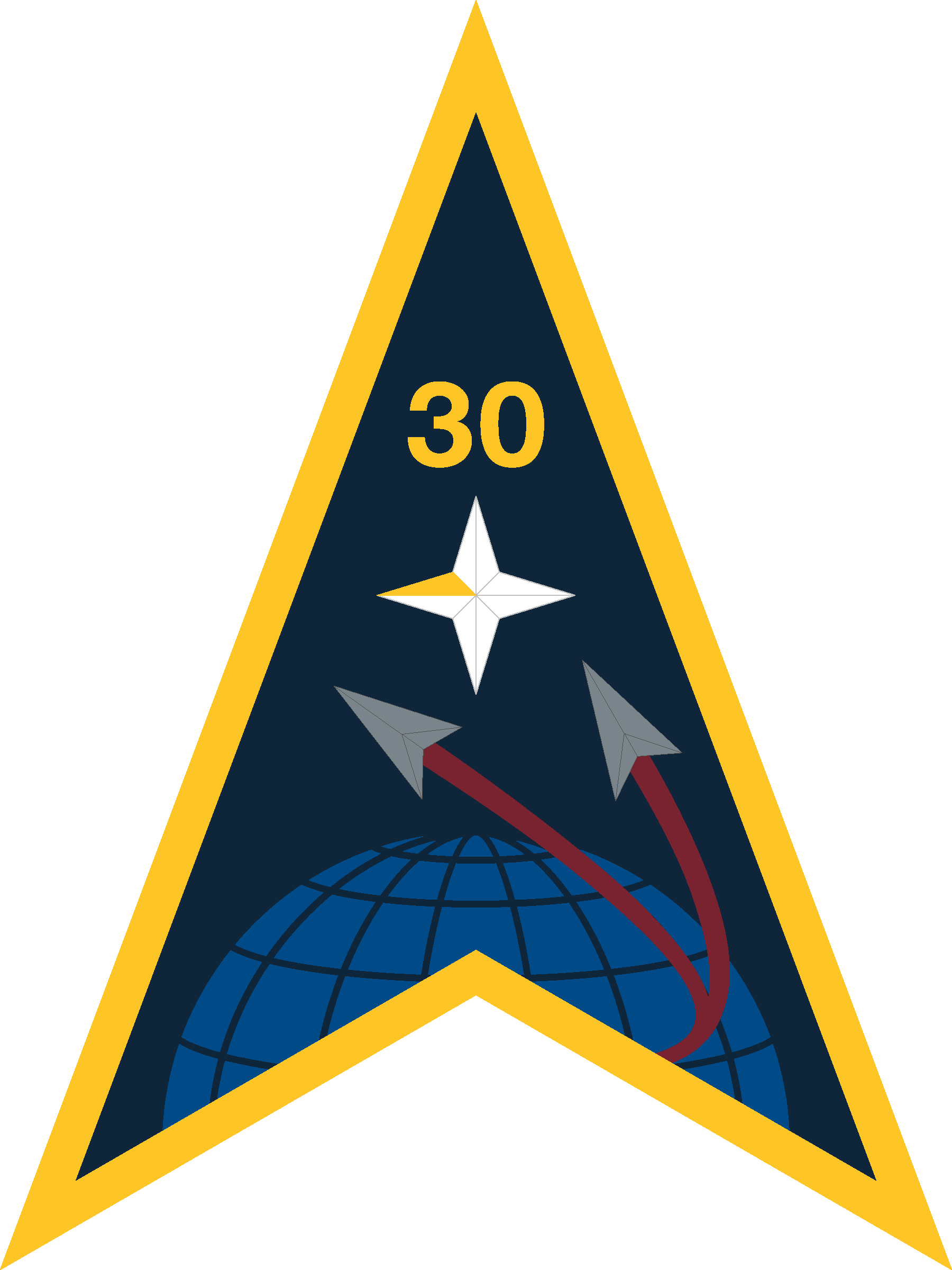|
392d Training Squadron
The United States Space Force's 392d Combat Training Squadron was an intercontinental ballistic missile training unit at Vandenberg Air Force Base, California. Its first predecessor was the 592d Bombardment Squadron, which trained aircrews on Boeing B-17 Flying Fortresses during World War II. Its second predecessor was the 392d Missile Training Squadron, which conducted training, primarily for Royal Air Force launch crews, on the PGM-17 Thor missile at Vandenberg from 1958 to 1963. The two squadrons were consolidated in 1985 and activated again in 1993 to train missile crews at Vandenberg. The squadron was inactivated in 2010. History The 392d Training Squadron traces its lineage through two different units, the 592nd Bombardment Squadron (Heavy) and the 392nd Missile Training Squadron. World War II bomber crew training The 592d Bombardment Squadron was first activated at Mountain Home Army Air Field, Idaho on 16 February 1943 as one of the four original squadrons of the ... [...More Info...] [...Related Items...] OR: [Wikipedia] [Google] [Baidu] |
Minuteman III
The LGM-30 Minuteman is an American land-based intercontinental ballistic missile (ICBM) in service with the Air Force Global Strike Command. , the LGM-30G Minuteman III version is the only land-based ICBM in service in the United States and represents the land leg of the U.S. nuclear triad, along with the Trident submarine-launched ballistic missile (SLBM) and nuclear weapons carried by long-range strategic bombers. Development of the Minuteman began in the mid-1950s when basic research indicated that a solid-fuel rocket motor could stand ready to launch for long periods of time, in contrast to liquid-fueled rockets that required fueling before launch and so might be destroyed in a surprise attack. The missile was named for the colonial minutemen of the American Revolutionary War, who could be ready to fight on short notice. The Minuteman entered service in 1962 as a deterrence weapon that could hit Soviet cities with a second strike and countervalue counterattack if the U.S. ... [...More Info...] [...Related Items...] OR: [Wikipedia] [Google] [Baidu] |
Operational - Replacement Training Units
Operational Training Units (OTU) and Replacement Training Units (RTU) were training organizations of the United States Army Air Forces during World War II. Unlike the schools of the Army Air Forces Training Command (AAFTC), OTU-RTU units were operational units of the four domestic numbered air forces along with I Troop Carrier Command and Air Transport Command, with the mission of final phase training new pilots or crews. Most were disbanded in the Spring of 1944 and replaced by combat crew replacement centers assigned to base units. History When the Army Air Corps began its great expansion program in 1939, no provision for operational training existed outside the combat groups themselves. Graduates of the flying schools were assigned either to fill the requirements of existing combat squadrons or to round out the cadre taken from an older unit to form a new one. Each combat squadron was responsible for training its own personnel in order to meet proficiency standards set by trai ... [...More Info...] [...Related Items...] OR: [Wikipedia] [Google] [Baidu] |
LGM-118 Peacekeeper
The LGM-118 Peacekeeper, originally known as the MX for "Missile, Experimental", was a MIRV-capable intercontinental ballistic missile (ICBM) produced and deployed by the United States from 1985 to 2005. The missile could carry up to twelve Mark 21 reentry vehicles (although treaties limited its actual payload to 10), each armed with a 300-kiloton W87 warhead. Initial plans called for building and deploying 100 MX ICBMs, but budgetary concerns eliminated the final procurement; only 50 entered service. Disarmament treaties signed after the Peacekeeper's development led to its withdrawal from service in 2005. Studies on the underlying concept started in the 1960s. The idea was to allow the U.S. to absorb a sneak attack by the USSR with enough warheads surviving to attack the remaining Soviet missile silos. To do so, the missiles had to be highly accurate, be based in such a way that enough would survive a nuclear attack, carry a large number of warheads so the survivors would stil ... [...More Info...] [...Related Items...] OR: [Wikipedia] [Google] [Baidu] |
LGM-30 Minuteman
The LGM-30 Minuteman is an American land-based intercontinental ballistic missile (ICBM) in service with the Air Force Global Strike Command. , the LGM-30G Minuteman III version is the only land-based ICBM in service in the United States and represents the land leg of the U.S. nuclear triad, along with the Trident submarine-launched ballistic missile (SLBM) and nuclear weapons carried by long-range strategic bombers. Development of the Minuteman began in the mid-1950s when basic research indicated that a solid-fuel rocket motor could stand ready to launch for long periods of time, in contrast to liquid-fueled rockets that required fueling before launch and so might be destroyed in a surprise attack. The missile was named for the colonial minutemen of the American Revolutionary War, who could be ready to fight on short notice. The Minuteman entered service in 1962 as a deterrence weapon that could hit Soviet cities with a second strike and countervalue counterattack if the U.S ... [...More Info...] [...Related Items...] OR: [Wikipedia] [Google] [Baidu] |
Intermediate-range Ballistic Missile
An intermediate-range ballistic missile (IRBM) is a ballistic missile with a range of 3,000–5,500 km (1,864–3,418 miles), between a medium-range ballistic missile (MRBM) and an intercontinental ballistic missile (ICBM). Classifying ballistic missiles by range is done mostly for convenience; in principle there is very little difference between a low-performance ICBM and a high-performance IRBM, because decreasing payload mass can increase range over ICBM threshold. The range definition used here is used within the U.S. Missile Defense Agency. Some other sources include an additional category, the long-range ballistic missile (LRBM), to describe missiles with a range between IRBMs and true ICBMs. The more modern term theatre ballistic missile encompasses MRBMs and SRBMs, including any ballistic missile with a range under . The progenitor for the IRBM was the A4b winged rocket, based on the V-2 (officially called A4) rocket used by Nazi Germany at the end of World War II ... [...More Info...] [...Related Items...] OR: [Wikipedia] [Google] [Baidu] |
Intermediate Range Ballistic Missile
An intermediate-range ballistic missile (IRBM) is a ballistic missile with a range of 3,000–5,500 km (1,864–3,418 miles), between a medium-range ballistic missile (MRBM) and an intercontinental ballistic missile (ICBM). Classifying ballistic missiles by range is done mostly for convenience; in principle there is very little difference between a low-performance ICBM and a high-performance IRBM, because decreasing payload mass can increase range over ICBM threshold. The range definition used here is used within the U.S. Missile Defense Agency. Some other sources include an additional category, the long-range ballistic missile (LRBM), to describe missiles with a range between IRBMs and true ICBMs. The more modern term theatre ballistic missile encompasses MRBMs and SRBMs, including any ballistic missile with a range under . The progenitor for the IRBM was the A4b winged rocket, based on the V-2 (officially called A4) rocket used by Nazi Germany at the end of World War ... [...More Info...] [...Related Items...] OR: [Wikipedia] [Google] [Baidu] |
SM-75 Thor
The PGM-17A Thor was the first operational ballistic missile of the United States Air Force (USAF). Named after the Norse god of thunder, it was deployed in the United Kingdom between 1959 and September 1963 as an intermediate-range ballistic missile (IRBM) with thermonuclear warheads. Thor was in height and in diameter. It was later augmented in the U.S. IRBM arsenal by the Jupiter. The Thor and later Delta families of space launch vehicles used boosters derived from the initial Thor missile. History Fearful that the Soviet Union would deploy a long-range ballistic missile before the U.S., in January 1956 the USAF began developing the Thor, a intermediate-range ballistic missile. The program proceeded quickly as a stop-gap measure, and within three years of inception the first of 20 Royal Air Force Thor squadrons became operational in the UK. The UK deployment carried the codename 'Project Emily'. One of the advantages of the design was that, unlike the Jupiter MRBM, the ... [...More Info...] [...Related Items...] OR: [Wikipedia] [Google] [Baidu] |
Cooke Air Force Base
Vandenberg Space Force Base , previously Vandenberg Air Force Base, is a United States Space Force Base in Santa Barbara County, California. Established in 1941, Vandenberg Space Force Base is a space launch base, launching spacecraft from the Western Range, and also performs missile testing. The United States Space Force's Space Launch Delta 30 serves as the host delta for the base. In addition to its military space launch mission, Vandenberg Space Force Base also performs space launches for civil and commercial space entities, such as NASA and SpaceX. History United States Army Camp Cooke (1941–1953) In 1941, the United States Army embarked on an initiative to acquire lands in the United States to be used to train its infantry and armored forces. These areas needed to be of a varied nature to ensure relevant training. In March 1941, the Army acquired approximately of open ranch lands along the Central Coast of California between Lompoc and Santa Maria. Mos ... [...More Info...] [...Related Items...] OR: [Wikipedia] [Google] [Baidu] |


.png)


